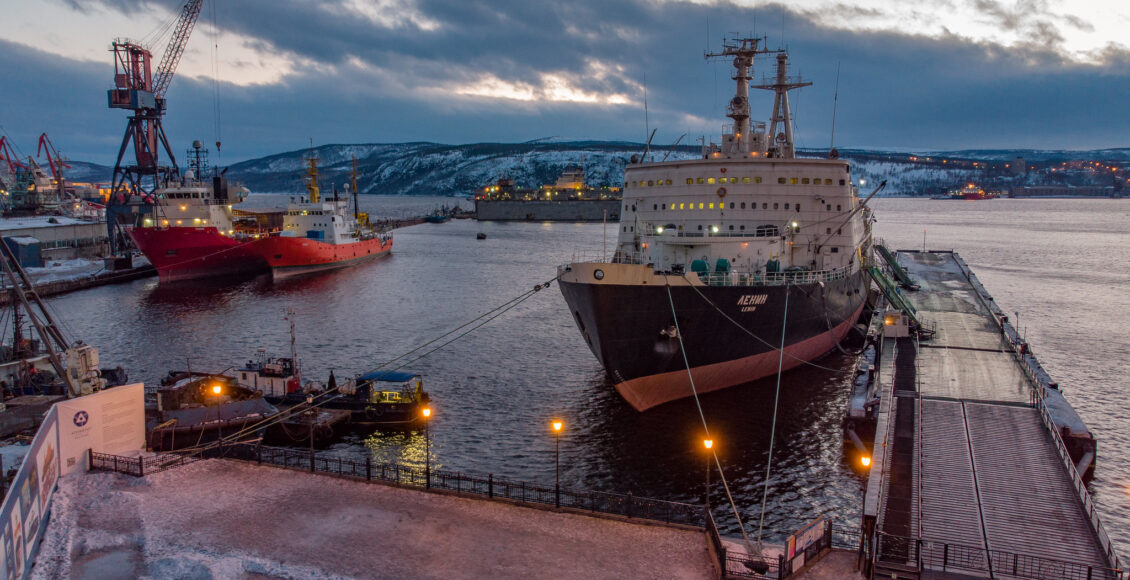Building BRICS in the Arctic

In 1996, the Arctic Council was formally established as an intergovernmental forum with the goal of promoting cooperation between Arctic States, Arctic Indigenous Peoples, and other Arctic inhabitants on common issues. The “Arctic States” refers to eight nations with territories in the Arctic region, including Canada, Denmark, Finland, Iceland, Norway, Sweden, the United States, and Russia. The council also includes six permanent participant groups representing Arctic Indigenous Peoples. Since its founding, the Arctic Council has produced three monumental legally binding agreements between the Arctic States; the Agreement on Cooperation on Aeronautical and Maritime Search and Rescue in the Arctic in 2011, the Agreement on Cooperation on Marine Oil Pollution Preparedness and Response in the Arctic in 2013, and the Agreement on Enhancing International Arctic Scientific Cooperation in 2017.

The Council’s 2021-2030 Strategic Plan states that it is working towards making the Arctic a region of “peace, stability and constructive cooperation, that is a vibrant, prosperous, sustainable and secure home for all its inhabitants, including Indigenous Peoples, and where their rights and wellbeing are respected.” Despite this, cooperation in the Arctic has been destabilized as tensions between Russia and the Western world have risen. In 2015, the Russian Deputy Prime Minister travelled to Svalbard, a remote group of Arctic islands administered by Norway with a significant Russian population, without notifying or obtaining permission from the Norwegian government proclaiming that “there are many problems that are not solved for decades during Soviet times and in the pre-Soviet period” in the region. Moreover, since Russia’s invasion of Ukraine in early 2022, the imposition of sanctions by Western states has forced Russia to begin looking outside the Council for future Arctic endeavours.
Perhaps the most notable player in Russia’s search for new collaborators is China. China has been jockeying for a more prominent position in the Arctic for years, but has been largely thwarted by Russia’s close protection of its dominant role in the region. The invasion of Ukraine has rerouted Russian strategy, as they are increasingly economically isolated. Sanctions from the US, NATO, and EU – and their support of Ukraine in the war – have forced Russia to be more dependent on China to shore up their economy. Sanctions have reduced demand for Russian crude oil, leaving China as one of the only states still willing to purchase it. Moreover, companies such as Total Energies, British Petroleum, and Exxon have either scaled back their work in Russia or pulled out of Russian projects all together.
Many Chinese companies have since expressed interests in either entering or expanding their involvement with Russia in the Arctic. The China Energy Engineering Corporation agreed in August to explore natural gas deposits in the Nenets region, which sits above the Arctic Circle along the Barents Sea. China Communications Construction and China Railway Construction have been discussing plans to mine raw materials in the Komi Republic, an area near the Arctic Circle, which would include a railroad to ship materials to the coast and a deep water port to load ships for transportation along the Northern Sea Route (NSR). The NSR is 30 per cent faster than the traditional Southern Route, which follows the Suez Canal, and has become increasingly feasible for shipping as climate change has caused large ice formations to break up.
Russia has drastically increased their use of the NSR in the last year, transporting twelve shipments of oil to China along Russia’s coast from the Barents Sea to the Bering Strait, compared to only a single trial voyage completed in 2022. Russian oil exports to China have also increased significantly overall, going up by 23 per cent to 400,000 barrels per day this year.
In 2018, China declared itself a ‘near Arctic’ nation, disregarding the fact that it is almost 1,000 miles from the Arctic Circle. Therefore, collaboration with Russia presents an important opportunity for China to solidify this ‘near Arctic’ identity. The other Arctic nations have become hesitant towards Chinese investment in the region, with Denmark blocking China’s plan to build three airports in Greenland and Canada preventing a Chinese company from purchasing a gold mine in its Arctic territory.
Although the Chinese-Russian relationship is a crucial one to watch, there are other important actors beginning to emerge. The region of Svalbard plays an integral role in Arctic cooperation, acting as a site for Russia to integrate new countries as well as assert their prominence in the region. In May of this year, Russian residents on one of Svalbard’s islands held a paramilitary parade which included fifty vehicles and a helicopter in a town of less than 500 people. Moreover, the Russian Minister for Development of the Far East and the Arctic has suggested that Russian mining company Trust Arktikugal is looking to establish a research centre in Svalbard with Chinese investment.

Notably, Russia has also shown interest in cooperating with other BRICS nations in the Arctic, including India and Brazil. Earlier this year, the Russian Minister for Development of the Far East and the Arctic stated that plans for a new research station on Svalbard would be completed alongside the BRICS, as well as other ‘friendly countries’ – a term Russian authorities use to refer to states that have not imposed sanctions against them following the Ukraine invasion. Indian and Russian officials have already met twice this year to discuss strengthening Arctic cooperation in regard to shipping and other economic activity. In particular, the advancement of the NSR and the potential development of the Eastern Maritime Corridor (EMC). The EMC would connect far eastern Russia to the Indian port city of Chennai. The NSR could potentially provide a critical opportunity for India, with the Minister of Ports, Shipping, and Waterways stating that, “India is keen to collaborate [on] a partnership regarding the development of the Northern Sea Route, recognising the potential it holds for enhanced connectivity and trade.” India is also already present on Svalbard through research activities in collaboration with Norwegian company Kings Bay.
Brazil has also consistently expressed interest in getting involved in the Arctic region over the last couple decades, as their interests in the Amazon region align quite closely with the interests of the Arctic Council. In 2010 Brazil discussed accession to the Svalbard treaty, as well as whether or not to apply for observer status in the Council, in 2019 the Foreign Ministry at the Navy Centre for Political and Strategic Studies led to the establishment of the Brazilian Technical Group on Arctic Activities, and in 2022 the Brazilian Interministerial Commission on Sea Resource made the official recommendation that the government ratify the Svalbard Treaty and apply for Council membership. Brazil has also maintained economic involvement in the Arctic through the exportation of deep-water oil and gas extraction equipment to Arctic states. Deepening cooperation is therefore considered imperative to continue developing Brazil’s domestic oil and gas industry.
Although Russia’s broadening cooperation in the Arctic does not appear particularly problematic at the moment, as the American National Security Council dismissed questions of concern surrounding Russia’s growing relationship with China, its wider effects on the region and on geopolitical relations as a whole are not yet clear.
Edited by Nicole Kastanias.
Featured Image: Ships docked at the Arctic port of Murmansk, in northwestern Russia. “Port of Murmansk, Arctic Russia” by Dmitry is licensed under CC BY-SA 2.0.
